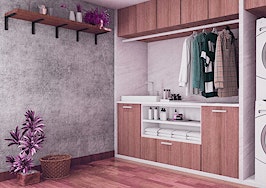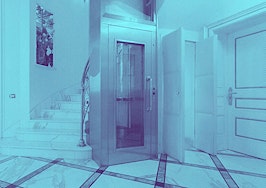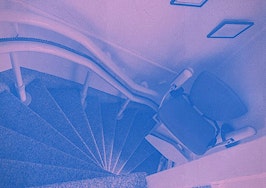A human’s best friend, once banished to a doghouse in the backyard, has now moved into the family residence, as evidenced by elaborate dog beds, pet toys and the latest addition: the dog spa.
Although relatively unknown as recently as two years ago, pet spas are easily researched as they become more and more common. Online photos of pet spas show dogs proudly posing in their own shower or tub, delighted to claim the space as their own.
Pet owners are equally thrilled to bathe their dog in a shower separate from their own, as they no longer have to deep clean the tub and shower after each pet is bathed and before it is used by the dog’s owner.
As an agent, it’s crucial to stay on top of these trends. Here’s what you should know about dog spas, from location to showerhead.
Dog spas: What you should know
The central feature of this dedicated space is a shower or tub, or both, that helps pet owners clean and groom their active pets all in one spot. The most devoted pet parent may have grooming sessions booked far in advance, but the home spa addresses pets who are wet or muddy due to weather or outdoor activities.
Portables
Portable grooming centers, many constructed of stainless steel, are easily obtained and rolled out for bathing and grooming. Utilitarian in appearance and nature, they can be stored in a garage or garden shed, used with an outdoor plumbing hook-up and then stored.
Permanent
The dog spa, in contrast, is a built-in center, with custom tile and finishes, specifically for the purpose of pet grooming and as a permanent feature of a home, designed to increase property value and act as a selling point.
What to consider
Pet owners should think about the size and breed of their dog or other pets when designing the spa, but the most important feature is durability. Bathing a dog, no matter what the size or breed, can be an athletic undertaking for both the dog and the owner, so heavy-duty plumbing and construction is essential.
Location
Wet and dirty pets enter homes through backdoors, mudrooms or garages, so these are ideal locations for the pet spa and shower. While cleaning the pet is the goal, the larger agenda is to prevent a wet or muddy dog from tracking mud throughout the house.
If multiple pets live in one household, the spa should be sized to accommodate all the pets.
What you’ll need
Ample storage for grooming supplies and grounded electrical receptacles are advised if electric grooming tools will be used, and nonslip, easy-to-clean surfaces will benefit both humans and pets.
Showerhead
A heavy-duty handheld showerhead is strongly recommended, as a stationery shower does not offer the flexibility to follow a wet, slippery or nervous dog. Keeping in mind the size, breed and age of the dog will help dictate the type of shower you’ll need to get. Smaller and older pets may be fine in a low shower with a raised edge to prevent water spills and slips.
Height
Another possibility is to use a built-in stairway or ramp to allow the pet access to a shower at counter height, allowing the individual tasked with grooming easier access and less bending and stooping.
Drainage
Tubs that are appropriately sized for the animal to be bathed, or commercial sinks, are also a good idea. Again, the drain should be at least three inches in diameter and heavy duty, to withstand hair, fur and debris, and the handheld shower should be of commercial quality.
Shatterproof doors?
If your pet gets nervous at the thought of being bathed, consider shatterproof shower doors that you can close to contain your pet. These doors need only be as high as the height of the pet and may offer a feeling of security.
Gerard Splendore is a licensed associate real estate broker with Warburg Realty in New York. Connect with him on LinkedIn.













